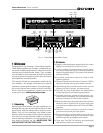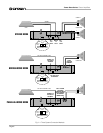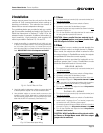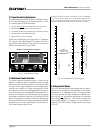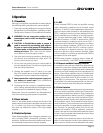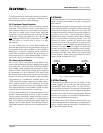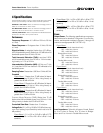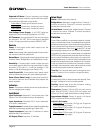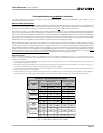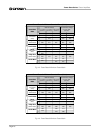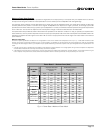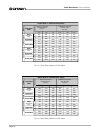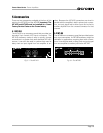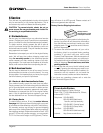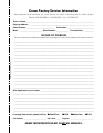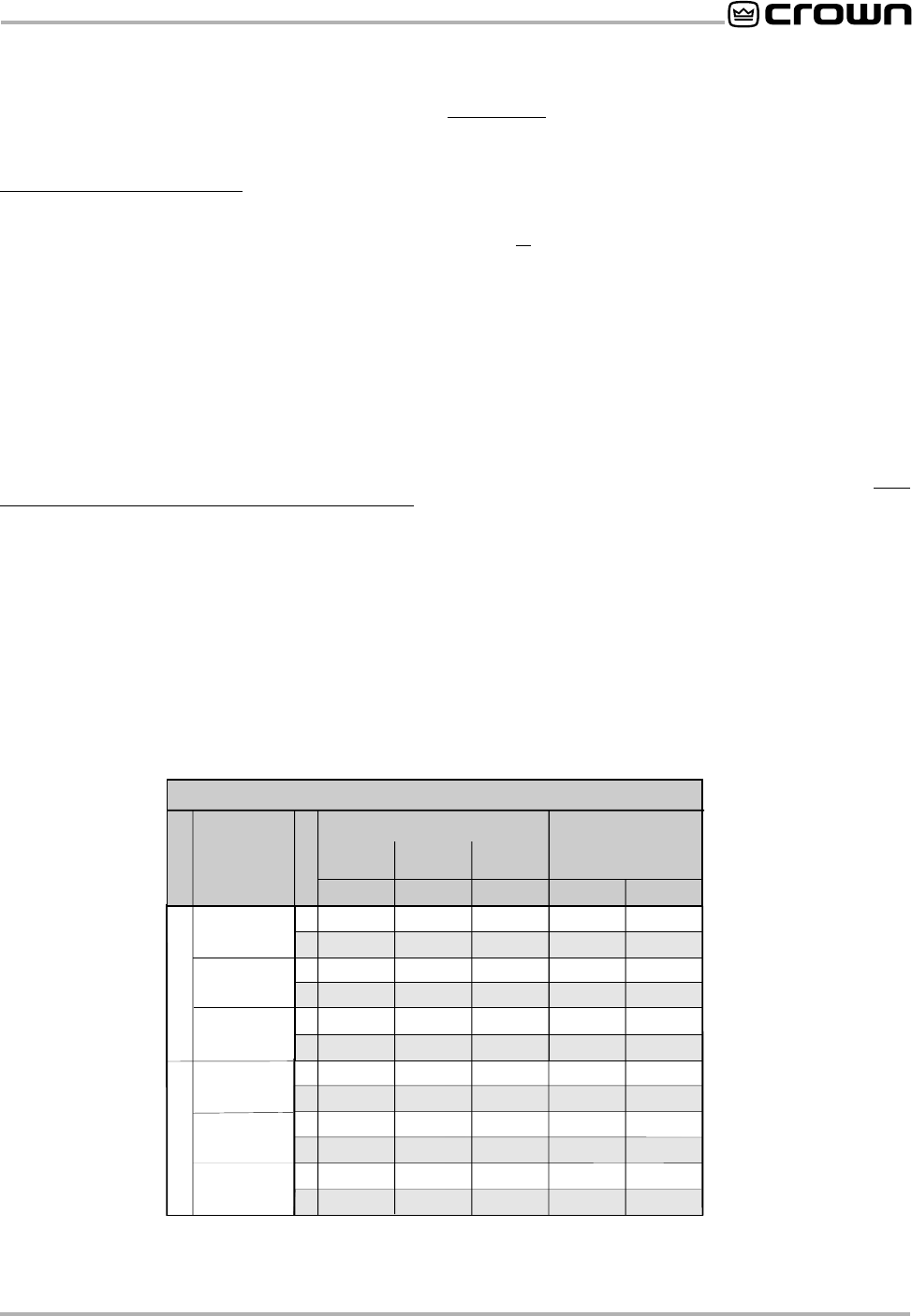
Power Base Series Power Amplifiers
Page 15
8
Power Base-1 – Minimum Guaranteed Power (Watts)
Stereo-Mono
Mode
Stereo
(both channels
driven)
Bridge-Mono
(balanced output)
Parallel-Mono
16
4
0.1% THD + Noise
(See note 4)
1 kHz 20Hz-20kHz
180
350
175
350
200
390
390
200
390
390
Maximum Average
Load (Ohms)
AC Mains120 VAC, 60 Hz Units
1 kHz
0.1% THD+N
(See note 1)
0.1% THD+N
(See note 2)
240
200
455
395
455
400
230
205
465
410
440
410
20Hz-20kHz
175
185
360
370
165
185
355
375
4
2
8
0.05% THD+N
(See note 3)
1 kHz
8
Stereo
(both channels
driven)
Bridge-Mono
(balanced output)
Parallel-Mono
16
International Units
4
2
8
235
200
455
390
445
395
225
200
455
405
430
405
4
FTC Continuous Average
Fig. 4.1 Power Base-1 Minimum Power Matrix
Crown specifications are guaranteed for three years.
In an effort to provide you with as much information as possible about the high power-producing capabilities of your amplifier, we have
created the following power matrices.
Minimum Power Specifications
Crown’s minimum power specifications represent the absolute smallest amount of output power you can expect from your amplifier when it
is driven to full output under the given conditions. Some spaces in each matrix may be left blank because the same guarantee is not
provided for those conditions—however, your amplifier will perform well under all conditions listed in each matrix.
When measuring power, 0.1% THD appears to be the industry standard for distortion. Two of the maximum average power specifications
shown in each minimum power matrix are measured at 0.1% THD so you can easily compare Crown specifications to those of other manu-
facturers. But this high level of distortion actually allows for some clipping which is undesirable. Because of this, a maximum average power
spec at 0.05% THD is included in each minimum power matrix which represents non-clipped conditions. Although most manufacturers do
not give you power specifications at 0.05% THD, we encourage them to provide these specifications so you will have a more realistic
representation of the way amplifiers should be used in the real world—without a clipped output signal.
Many manufacturers publish power specs with a tolerance of ±1 dB or worse. This means their amplifier can deviate more than 20% in
output! A 100 watt amplifier would meet their specification if it only produced 79.4 watts. Other manufacturers qualify their specs by saying
they are “typical,” “subject to manufacturing tolerances,” “single channel driven” or that they are specified with “fuses bypassed.” Each of
these statements effectively removes any performance guarantee. In fact, some manufacturers use these tactics to generate large power
numbers, and they don’t even print a disclaimer. We take a different approach at Crown—our amplifiers are
guaranteed
to meet or exceed
their specifications for three years. Further, because our published specs are set below our “in-house” measurements, you can expect
every
Crown amplifier to
exceed
its published minimum power specs. We believe you should get what you pay for.
Minimum Power Notes:
All minimum power specifications are based on 0.1% regulated AC mains and an ambient room temperature of 70° F (21° C). A 100V, 50Hz model was used
because of its higher current demand. The standard EIA power measurement (RS-490) is not identified here because it is identical to the FTC Continuous
Average Power specification.
1. A 1 kHz sine wave is presented to the amplifier and the output monitored for nonlinear distortion. The level is increased until the THD reaches 0.1%. At this level
the average power per channel is reported.
2. A sine wave is presented to the amplifier over the range from 20 Hz to 20 kHz and the output monitored for nonlinear distortion. The level at each frequency is
increased until the THD reaches 0.1%. At this level the average power per channel is reported.
3. A 1 kHz sine wave is presented to the amplifier and the output monitored for nonlinear distortion. The level is increased until the THD reaches 0.05%. At this
level the average power per channel is reported.
4. Continuous power in the context of Federal Trade Commission testing is understood to be a minimum of five minutes of operation. Harmonic distortion is
measured as the RMS sum total and given as a percentage of the fundamental output voltage. This applies for all wattages greater than 0.25 watts.




